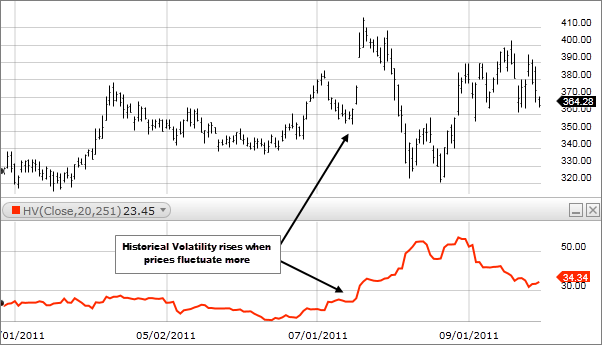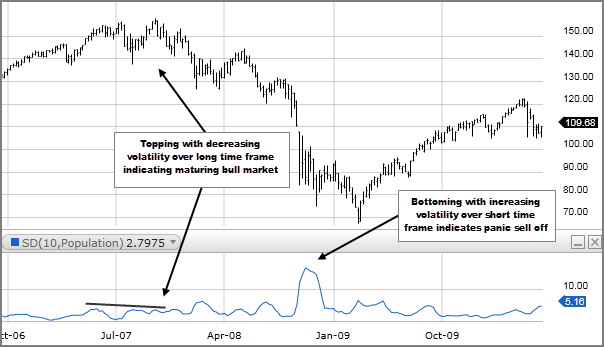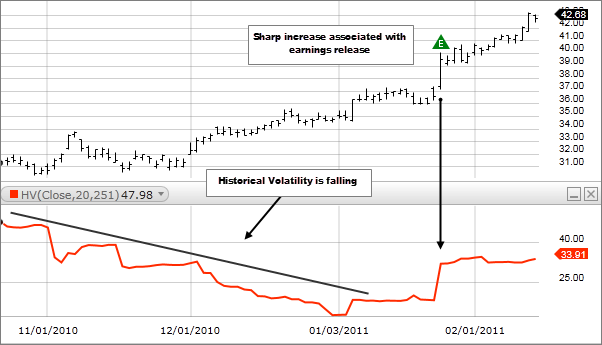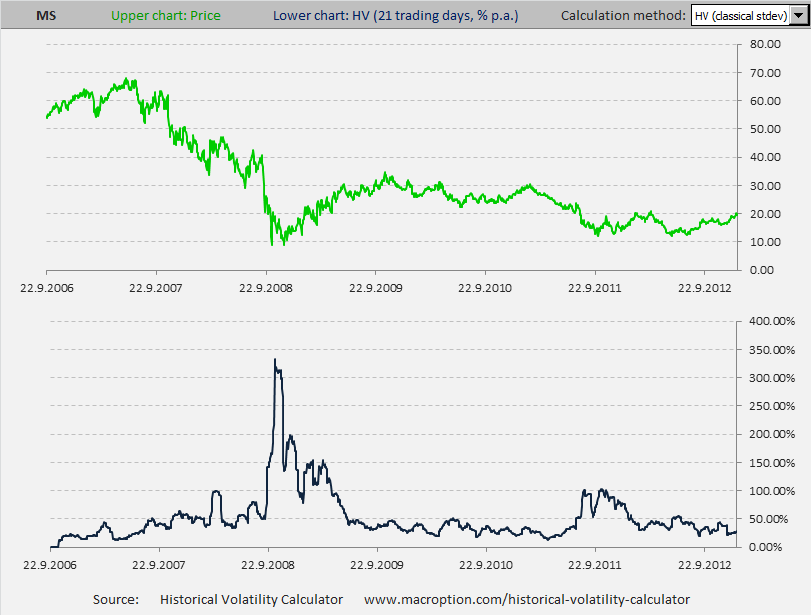28+ Volatility in stocks meaning Wallet
Home » News » 28+ Volatility in stocks meaning WalletYour Volatility in stocks meaning coin are available in this site. Volatility in stocks meaning are a exchange that is most popular and liked by everyone this time. You can News the Volatility in stocks meaning files here. Find and Download all royalty-free news.
If you’re searching for volatility in stocks meaning images information linked to the volatility in stocks meaning interest, you have come to the right site. Our website frequently gives you hints for seeking the highest quality video and image content, please kindly search and find more informative video articles and graphics that fit your interests.
Volatility In Stocks Meaning. Volatility is the measure of how much a stocks price moves. Market volatility is defined as a statistical measure of a stocks or other assets deviations from a set benchmark or its own average performance. A measurement of historic volatility looks at a securitys past market prices. Its real measureable and most importantly it has already happened.
 Trading Volatile Stocks With Technical Indicators From investopedia.com
Trading Volatile Stocks With Technical Indicators From investopedia.com
Generally it is measured by calculating the standard deviation between the returns of a market index or security. What is Stock Volatility. Volatility is defined as the rate at which the price of a security increases or decreases for a given set of returns. It indicates the risk associated with the changing price of the security and is measured by calculating the standard deviation of the annualized returns over a given period of time. Volatility stands for the risk of change in the price of a security. It measures how fast those movements are how often they occur and how big they are.
Market volatility is the frequency and magnitude of price movements up or down.
A measurement of historic volatility looks at a securitys past market prices. And if volatility is high for the overall market get ready to swoon and not in a celebrity-sighting kind of way. The bigger and more frequent the price swings the more volatile the market is said to be. Volatility is defined as the rate at which the price of a security increases or decreases for a given set of returns. A stock that maintains a relatively stable price has low volatility. Investors evaluate the volatility of stock before making a decision to purchase a new stock offering buy additional shares of a stock already in the portfolio or sell stock currently in the possession of the investor.
 Source: ruleoneinvesting.com
Source: ruleoneinvesting.com
What is Volatility in the Stock Market. Or in other words historical volatility is the actual stock price volatility. Volatility is the measure of how much a stocks price moves. What is Stock Volatility. When volatility is high the dispersion will be.
 Source: study.com
Source: study.com
It measures how fast those movements are how often they occur and how big they are. Volatility is an arithmetic measure of the spread of the returns from investment in an asset. What is Stock Volatility. Stock volatility refers to the potential for a given stock to experience a drastic decrease or increase in value within a predetermined period of time. A measurement of historic volatility looks at a securitys past market prices.
 Source: lynalden.com
Source: lynalden.com
Market or stock volatility comes as a result of the price swings you see on a daily basis. It can also be defined as a statistical measure of dispersion for particular securities and is. It is a rate at which the price of a security increases or decreases for a given set of returns. It is essentially an analysis of the changes in the value of a security. So what does stock volatility mean.
 Source: investopedia.com
Source: investopedia.com
It indicates the risk associated with the changing price of the security and is measured by calculating the standard deviation of the annualized returns over a given period of time. High volatile stocks in NSE are popular among institutional investors and individuals willing to assume a high market risk in order to earn high profits through market trends. At its most basic stock volatility is the extent to which share prices increase and decrease. Its a measure of past volatility of the overall stock market sector or individual stock. Experts often point to high market volatility as an indicator that a big drop and potential bear market is on the way.
 Source: investopedia.com
Source: investopedia.com
When volatility is high the dispersion will be. Its real measureable and most importantly it has already happened. What is volatility. It is a rate at which the price of a security increases or decreases for a given set of returns. If volatility is high for a stock that means it could be a risky bet because of wild price swings.
 Source: fidelity.com
Source: fidelity.com
At its most basic stock volatility is the extent to which share prices increase and decrease. A more volatile trade has the potential for significant gains but also substantial losses. It is a rate at which the price of a security increases or decreases for a given set of returns. Market volatility is defined as a statistical measure of a stocks or other assets deviations from a set benchmark or its own average performance. It indicates the risk associated with the changing price of the security and is measured by calculating the standard deviation of the annualized returns over a given period of time.

A stock that maintains a relatively stable price has low volatility. And if volatility is high for the overall market get ready to swoon and not in a celebrity-sighting kind of way. It can also be defined as a statistical measure of dispersion for particular securities and is. The daily volatility of a security is the standard deviation of a daily return time series. Generally it is measured by calculating the standard deviation between the returns of a market index or security.
 Source: fidelity.com
Source: fidelity.com
If volatility is high for a stock that means it could be a risky bet because of wild price swings. It is commonly used as a measure of the risk of the security. It indicates how much an assets values fluctuate above or below the mean price. It is one of the most key measures in quantifying risk. Equity shares of small and mid-cap companies are usually classified as volatile stocks and are subject to both systematic and unsystematic risks of the stock market.
 Source: fidelity.com
Source: fidelity.com
Its real measureable and most importantly it has already happened. A stocks volatility is equal to the amount that particular stock will separate from the original price at which it was traded. It is one of the most key measures in quantifying risk. Market or stock volatility comes as a result of the price swings you see on a daily basis. It is a rate at which the price of a security increases or decreases for a given set of returns.
 Source: morningstar.com
Source: morningstar.com
What is Volatility in the Stock Market. The daily volatility of a security is the standard deviation of a daily return time series. Market or stock volatility comes as a result of the price swings you see on a daily basis. Implied volatility looks forward in time being derived from the market price of a market-traded derivative in particular an option. When volatility is high the dispersion will be.
 Source: macroption.com
Source: macroption.com
Experts often point to high market volatility as an indicator that a big drop and potential bear market is on the way. While implied volatility tries to forecast the future stock price range the historical volatility is the realized volatility over time. Equity shares of small and mid-cap companies are usually classified as volatile stocks and are subject to both systematic and unsystematic risks of the stock market. In the stock market volatility stands for the risk of change in the price of a security. Market volatility is defined as a statistical measure of a stocks or other assets deviations from a set benchmark or its own average performance.
 Source: investopedia.com
Source: investopedia.com
Equity shares of small and mid-cap companies are usually classified as volatile stocks and are subject to both systematic and unsystematic risks of the stock market. Beta coefficients option pricing models and standard deviations of returns are examples of techniques to quantify volatility. When volatility is high the dispersion will be. Or in other words historical volatility is the actual stock price volatility. A measurement of historic volatility looks at a securitys past market prices.
 Source: fool.com
Source: fool.com
Market volatility is defined as a statistical measure of a stocks or other assets deviations from a set benchmark or its own average performance. Stock market volatility refers to the range of price movement of a stock over time. Its real measureable and most importantly it has already happened. When volatility is high the dispersion will be. Traders refer to this as historical or realized volatility.
 Source: capital.com
Source: capital.com
Market or stock volatility comes as a result of the price swings you see on a daily basis. In finance volatility usually denoted by σ is the degree of variation of a trading price series over time usually measured by the standard deviation of logarithmic returns. And if volatility is high for the overall market get ready to swoon and not in a celebrity-sighting kind of way. Stock volatility refers to the potential for a given stock to experience a drastic decrease or increase in value within a predetermined period of time. Historic volatility measures a time series of past market prices.
 Source: investopedia.com
Source: investopedia.com
The daily volatility of a security is the standard deviation of a daily return time series. A characteristic feature of such stocks is its high risk high return ratio. A more volatile trade has the potential for significant gains but also substantial losses. Or in other words historical volatility is the actual stock price volatility. Volatility is the measure of how much a stocks price moves.
 Source: wallstreetmojo.com
Source: wallstreetmojo.com
High volatility is associated with higher risk. Equity shares of small and mid-cap companies are usually classified as volatile stocks and are subject to both systematic and unsystematic risks of the stock market. It is essentially an analysis of the changes in the value of a security. It can be measured against the ups and downs of the market Or it can be plotted statistically against the average price. Market or stock volatility comes as a result of the price swings you see on a daily basis.
 Source: youtube.com
Source: youtube.com
In the stock market volatility stands for the risk of change in the price of a security. In finance volatility is a measurement of the fluctuations of the price of a security. Its a measure of past volatility of the overall stock market sector or individual stock. Experts often point to high market volatility as an indicator that a big drop and potential bear market is on the way. Implied volatility looks forward in time being derived from the market price of a market-traded derivative in particular an option.
 Source: investopedia.com
Source: investopedia.com
Stock volatility refers to the potential for a given stock to experience a drastic decrease or increase in value within a predetermined period of time. A stock with a price that fluctuates wildlyhits new highs and lows or moves erraticallyis considered highly volatile. What is volatility. High volatility is associated with higher risk. Beta coefficients option pricing models and standard deviations of returns are examples of techniques to quantify volatility.
This site is an open community for users to share their favorite wallpapers on the internet, all images or pictures in this website are for personal wallpaper use only, it is stricly prohibited to use this wallpaper for commercial purposes, if you are the author and find this image is shared without your permission, please kindly raise a DMCA report to Us.
If you find this site convienient, please support us by sharing this posts to your favorite social media accounts like Facebook, Instagram and so on or you can also bookmark this blog page with the title volatility in stocks meaning by using Ctrl + D for devices a laptop with a Windows operating system or Command + D for laptops with an Apple operating system. If you use a smartphone, you can also use the drawer menu of the browser you are using. Whether it’s a Windows, Mac, iOS or Android operating system, you will still be able to bookmark this website.
Category
Related By Category
- 35++ Todays volatility index Trend
- 14++ Royal dutch shell market cap Wallet
- 26+ Travala coinmarketcap List
- 24++ Dow jones market today Mining
- 31+ Bombardier market cap Stock
- 22+ Best performing digital currency Trading
- 37+ Toyota market cap in usd Trending
- 29++ Apple inc market cap Bitcoin
- 19+ Cbn and cryptocurrency Trend
- 31++ 1 trillion market cap Best